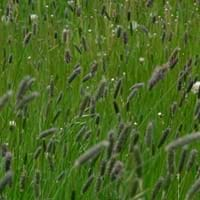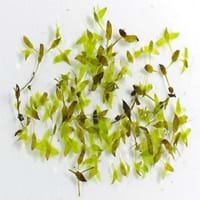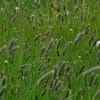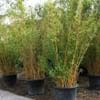Life Span
Perennial
Perennial
Origin
Europe, Asia
North America, Europe, Asia
Types
not available
Lemna minor
Habitat
Grassland
Lakes, Ponds, sluggish streams and rivers
USDA Hardiness Zone
5-8
1-8
Sunset Zone
2a, 2b, 3a, 3b, 4, 5, 6, 7, 8, 9, 10, 14, 15, 16, 17, 21, 22, 23, 24
21,22
Habit
Clump-Forming
Spreading
Flower Color
White
Non Flowering Plant
Flower Color Modifier
Bicolor
Not Available
Fruit Color
Not Available
Light Green
Leaf Color in Spring
Green
Green, Light Green
Leaf Color in Summer
Light Green
Green, Light Green
Leaf Color in Fall
Green
Green, Light Green
Leaf Color in Winter
Tan
Light Green
Leaf Shape
Grass like
Oblong-lanceolate
Plant Season
Spring, Summer, Fall, Winter
Spring, Summer, Fall
Sunlight
Full Sun
Full Sun, Partial Sun, Partial shade
Type of Soil
Clay, Loam, Sand
Aquatic Plant
The pH of Soil
Acidic, Neutral, Alkaline
Aquatic Plant
Soil Drainage
Average
Poorly Drained
Bloom Time
Spring, Summer
Late Spring, Early Summer
Tolerances
Wet Site
Cold climate, Salt, Wet Site
Where to Plant?
Ground
In Water
How to Plant?
Seedlings
Seedlings
Plant Maintenance
Medium
Low
Watering Requirements
Requires a lot of watering, Requires regular watering
Plant grows in water
In Summer
Lots of watering
Aquatic Plant
In Spring
Ample Water
Aquatic Plant
In Winter
Moderate
Aquatic Plant
Soil pH
Acidic, Neutral, Alkaline
Aquatic Plant
Soil Type
Clay, Loam, Sand
Aquatic Plant
Soil Drainage Capacity
Average
Poorly Drained
Sun Exposure
Full Sun
Full Sun, Partial Sun, Partial shade
Pruning
Prune to control growth
No need to prune
Fertilizers
Requires high amount of nitrogen
No fertilizers needed
Pests and Diseases
Red blotch
Insects, Red blotch
Plant Tolerance
Wet Site
Cold climate, Salt
Flowers
Showy
Insignificant
Flower Petal Number
Single
Not Available
Foliage Texture
Medium
Fine
Foliage Sheen
Matte
Glossy
Attracts
Not Available
Insects
Allergy
Asthma, conjunctivitis, Rhinitis
no allergic reactions
Aesthetic Uses
Not Used For Aesthetic Purpose
Not Used For Aesthetic Purpose
Beauty Benefits
Not Available
No Beauty Benefits
Environmental Uses
Food for animals, Food for insects, Wildlife
Food for insects
Medicinal Uses
No Medicinal Use
Swelling
Part of Plant Used
Whole plant
Not Available
Other Uses
cultivated as pasture or hay crop, Food for animals, Food for insects
Not Available
Used As Indoor Plant
No
No
Used As Outdoor Plant
Yes
Yes
Garden Design
Feature Plant, Groundcover, Rock Garden / Wall
Bog Garden, Water Gardens
Botanical Name
ALOPECURUS pratensis
LEMNA trisulca
Common Name
Meadow Foxtail
Duckmeat, Frog's Buttons, Ivyleaf Duckweed, Star Duckweed
In Hindi
Meadow Foxtail
duckweed
In German
Wiesenfuchsschwanz
Entengrütze
In French
vulpin des prés
lentille d'eau
In Spanish
pradera de cola de zorra
Lenteja de agua
In Greek
Meadow Foxtail
duckweed
In Portuguese
Meadow Foxtail
lentilha-d'água
In Latin
meadow Foxtail
duckweed
Phylum
Magnoliophyta
Tracheophyta
Class
Liliopsida
Liliopsida
Clade
Angiosperms, Commelinids, Monocots
Angiosperms, Monocots
Tribe
Not Available
Lemneae
Subfamily
Not Available
Lemnoideae
Number of Species
Not Available
Not Available
Difference Between Meadow Foxtail and Duckweed
If you are confused whether Meadow Foxtail or Duckweed are same, here are some features about those plants to help you choose better. Many people think that these two plants have the same characteristics, but one can see Meadow Foxtail and Duckweed Information and learn more about it. Fertilizers required for proper growth of Meadow Foxtail are Requires high amount of nitrogen, whereas for Duckweed fertilizers required are No fertilizers needed. Hence, one should know the basic difference between Meadow Foxtail and Duckweed if you are planning to have them in your garden to enhance its beauty.
<
Flowering PlantsImportance of Meadow Foxtail and Duckweed
Want to have the most appropriate plant for your garden? You might want to know the importance of Meadow Foxtail and Duckweed. Basically, these two plants vary in many aspects. Compare Meadow Foxtail and Duckweed as they differ in many characteristics such as their life, care, benefits, facts, etc. Every gardener must at least have the slightest clue about the plants he wants to plant in his garden. Compare their benefits, which differ in many ways like facts and uses. The medicinal use of Meadow Foxtail is No Medicinal Use whereas of Duckweed is Swelling. Meadow Foxtail has beauty benefits as follows: Not Available while Duckweed has beauty benefits as follows: Not Available.
Compare Facts of Meadow Foxtail vs Duckweed
How to choose the best garden plant for your garden depending upon its facts? Here garden plant comparison will help you to solve this query. Compare the facts of Meadow Foxtail vs Duckweed and know which one to choose. As garden plants have benefits and other uses, allergy is also a major drawback of plants for some people. Allergic reactions of Meadow Foxtail are Asthma, conjunctivitis and Rhinitis whereas of Duckweed have no allergic reactions respectively. Having a fruit bearing plant in your garden can be a plus point of your garden. Meadow Foxtail has showy fruits and Duckweed has no showy fruits. Also Meadow Foxtail is not flowering and Duckweed is not flowering . You can compare Meadow Foxtail and Duckweed facts and facts of other plants too.





